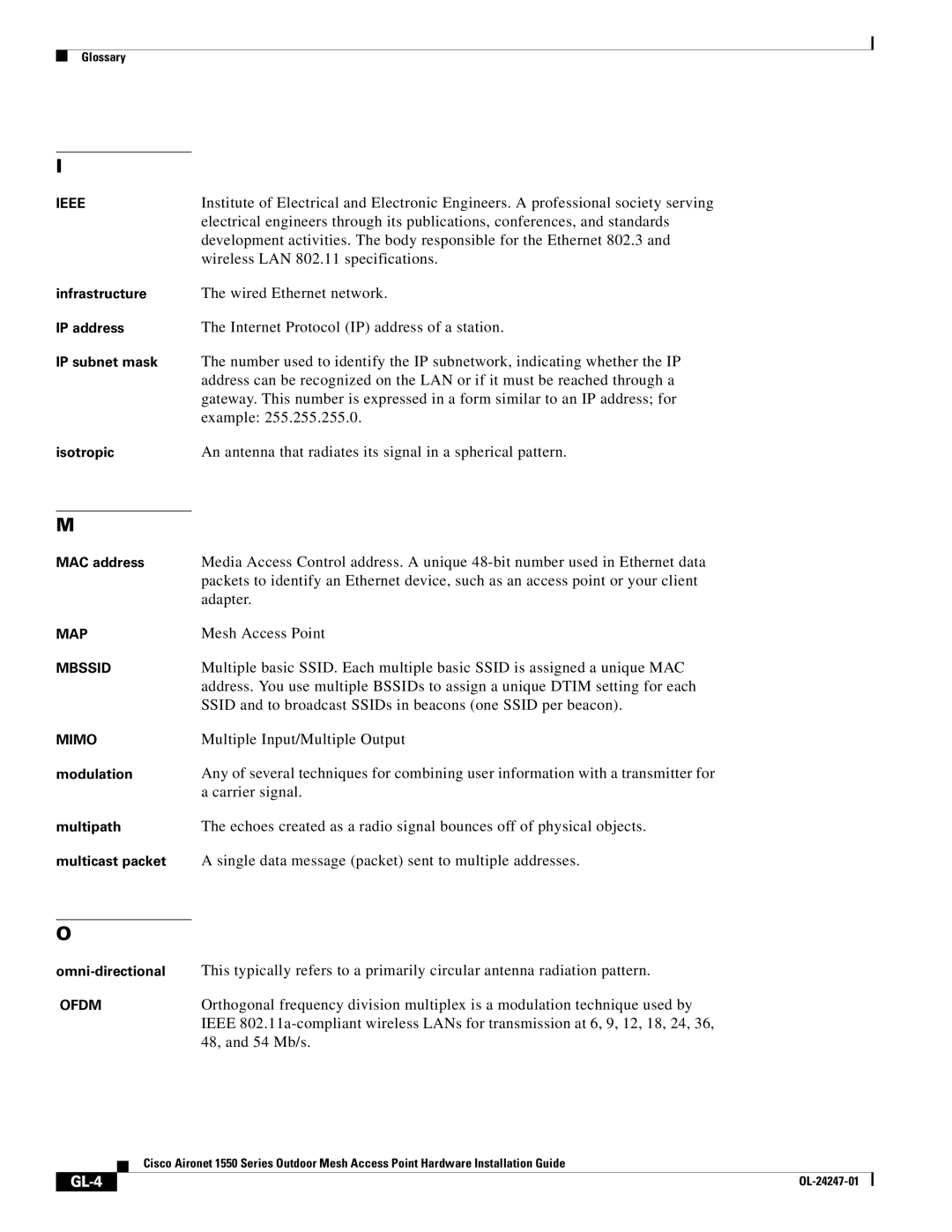
Glossary
I
IEEE
infrastructure
IP address
IP subnet mask
isotropic
Institute of Electrical and Electronic Engineers. A professional society serving electrical engineers through its publications, conferences, and standards development activities. The body responsible for the Ethernet 802.3 and wireless LAN 802.11 specifications.
The wired Ethernet network.
The Internet Protocol (IP) address of a station.
The number used to identify the IP subnetwork, indicating whether the IP address can be recognized on the LAN or if it must be reached through a gateway. This number is expressed in a form similar to an IP address; for example: 255.255.255.0.
An antenna that radiates its signal in a spherical pattern.
M
MAC address
MAP
MBSSID
MIMO
modulation
multipath
multicast packet
Media Access Control address. A unique
Mesh Access Point
Multiple basic SSID. Each multiple basic SSID is assigned a unique MAC address. You use multiple BSSIDs to assign a unique DTIM setting for each SSID and to broadcast SSIDs in beacons (one SSID per beacon).
Multiple Input/Multiple Output
Any of several techniques for combining user information with a transmitter for a carrier signal.
The echoes created as a radio signal bounces off of physical objects.
A single data message (packet) sent to multiple addresses.
O
OFDM
This typically refers to a primarily circular antenna radiation pattern.
Orthogonal frequency division multiplex is a modulation technique used by IEEE
| Cisco Aironet 1550 Series Outdoor Mesh Access Point Hardware Installation Guide |
|
|
